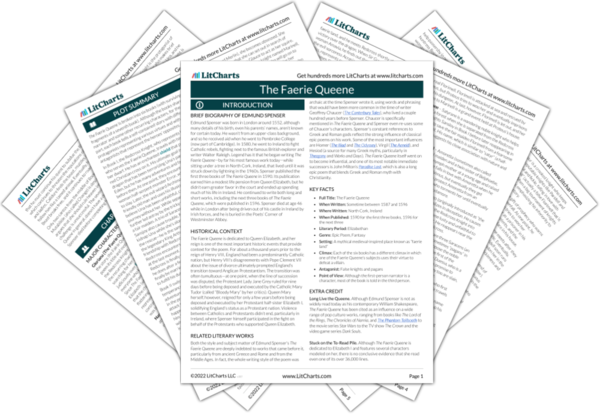Archimago learns the hard way that when he disguises himself as the Redcross Knight, all other characters will treat him that way, not just Una. Archimago is an evil character who might otherwise be allied with Sansloy, but because he can’t drop his disguise around Una, he has to fight Sansloy and suffer the consequences.
